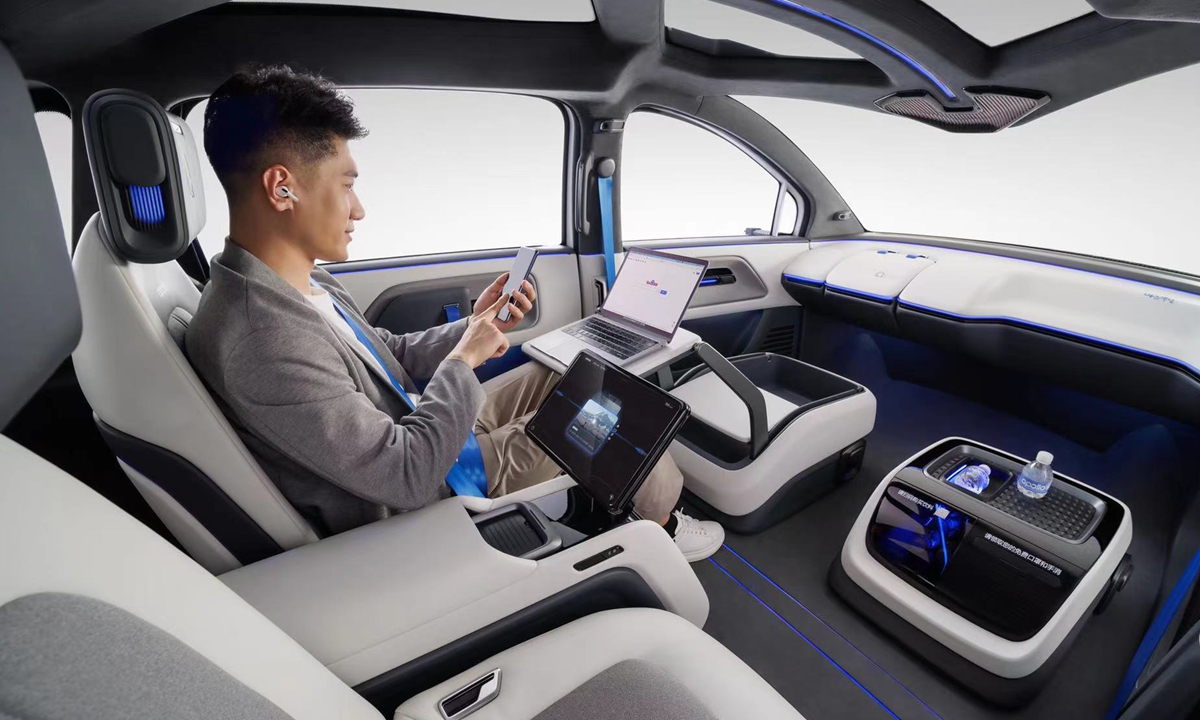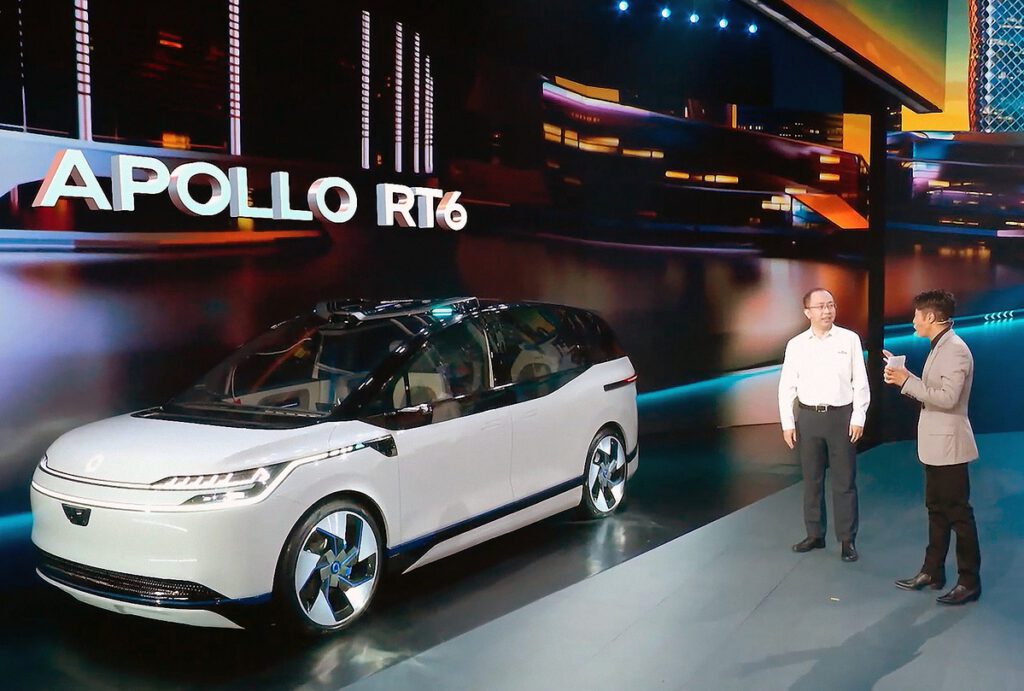
Appolo RT6 Driverless Robotaxi
Driverless Robotaxi, Appolo RT6, has been launched by Baidu. Let us explore Appolo RT6 and other Robotaxis around the world.
China’s search engine giant Baidu has launched its latest driverless taxi, Appolo RT6. It will be the newest addition to its Apollo Go self-driving taxi service.

Driverless Robotaxi Appolo RT6-More insights
Appolo RT6 costs less than half as much as a previously announced model and has a removable steering wheel. The recently unveiled Apollo RT6 has a production cost of roughly $37,000.
According to the manufacturer, the Apollo RT6 possesses the driving prowess of a driver with 20 years’ worth of experience.
Reuters, “Cost per unit will drop to 250,000 yuan ($37,031.55) for the new model, compared with 480,000 yuan for the previous generation, This massive cost reduction will enable us to deploy tens of thousands of AVs across China,” Baidu’s chief executive, Robin Li, said at the Baidu World conference. “We are moving towards a future where taking a robotaxi will be half the cost of taking a taxi today.”
The Apollo RT6 is a totally electric car with a steering wheel that can be removed or installed as needed. It was created for challenging metropolitan areas. In the future, the detachable steering wheel of the RT6 might be swapped out for more seats, vending machines, tables, or gaming consoles, according to Baidu.
Other features include
- Baidu’s 6th generation of autonomous vehicle
- A Level 4 autonomous driving system
- automotive-grade twin computing units with a processing speed of up to 1,200 tera operations per second
- 38 sensors
- eight light-detection and ranging (Lidar) sensors
- one 6mm (0.2in) wave radar
- 12 ultrasonic sensors
- 12 cameras
Driverless Robotaxi Appolo RT6 & Robo Taxis in China
Ten Chinese cities, including Beijing, Shanghai, and Shenzhen, are testing out Baidu Robo-taxis. More than a million rides have been provided by them.
Under Chinese regulations, autonomous cars currently require a safety driver’s presence. However, two businesses were granted permission to run driverless cabs on public streets in Beijing in April 2022. A 60 square kilometer area in Yizhuang, a southern suburb of Beijing, would deploy up to 30 autonomous vehicles without a safety operator at the wheel for commercial services. A manager will ride in the front passenger seat to oversee security.
The first groups of businesses to receive approval to offer commercial services are Baidu and Pony.ai.
Baidu Taxi in China- A short Youtube clip by Baidu
Robo Taxis around the World
Singapore – First to introduce Robo Taxi
Singapore was the first nation to introduce on-demand autonomous taxis in 2016. Two MIT researchers launched the Singapore-based startup nuTonomy.
Waymo by Google
Waymo began as the Google self-driving car project in 2009
It says, “We’re not just moving people. With Waymo Via, we’re focused on an autonomous solution for local and long-haul transport of goods. We’re helping to power an industry and move our economy forward.”

Cruise by GM
GM’s autonomous driving division, Cruise, has begun its paid driverless taxi service in San Francisco and officially took its first fares on 22 June 22
Honda and General Motors have provided funds to Cruise, an autonomous taxi service that runs in California. In early June, the business finally made its fully driverless taxi service available to the general public after more than a year of testing it in San Francisco.
Abu Dhabi – U.A.E.
When it comes to autonomous taxi services, Abu Dhabi leads Dubai. Abu Dhabi-based AI company Bayanat’s autonomous taxi service, known as TXAI completed the first phase of the trial. The second part of the project is expected to begin sometime this year. TXAI will be operating in 10 different locations in Abu Dhabi.
This is the first Autonomy pilot project in the Middle East.
Meanwhile, Dubai – the other leading emirate in the UAE – has announced its own trials for driverless taxis, in 2023
South Korea – Hyundai
Hyundai showed off its autonomous Ioniq 5 capable of Level 4 self-driving during the driverless ride-hailing service, which opened on June 9th, 2022 in Seoul, South Korea
Through a special app called i.M, which will operate much like the ones from Waymo or Cruise, you may request a RoboRide in an autonomous Ioniq 5. Jin Mobility, the startup that created the i.M platform, will provide artificial intelligence for it.
Future of RoboTaxis
The future looks promising for Robotaxis, with many top players eying the market including Google and Tesla. Passengers could also be in for a bargain, as Chinese operators predict taxi fares to be cut almost by half with the new technology.
China Daily has the following to say on the future of RoboTaxis
” According to BllombergNEF’s 2022 electric vehicle outlook, China will operate the world’s largest robotaxi fleet with about 12 million units by 2040, followed by the US which operates around 7 million autonomous vehicles.
As autonomous driving technology continues to mature, the sector is poised to witness robust growth in the coming years. The market size of China’s self-driving taxi services is expected to surpass 1.3 trillion yuan by 2030, accounting for 60 percent of the country’s ride-hailing market by then, said a report by global consultancy IHS Markit”
Other trending topics on this site
Chinese Taxi Giant DIDI fined US$ 1.2 Billion
Saudi Wealth Fund’s £653 million Investment in Aston Martin.
Uber Whistleblower leaked thousands of documents.
shop now2 Wigs Only $ 149



